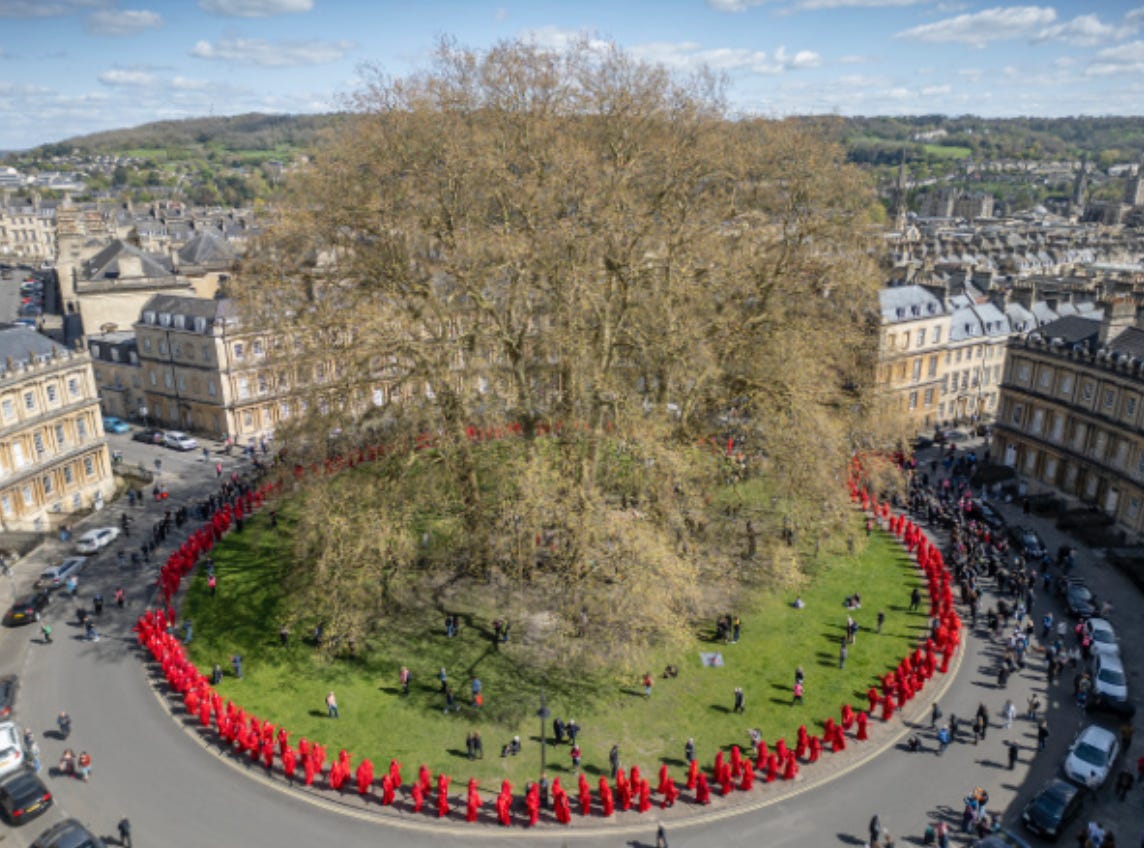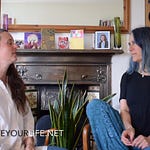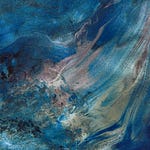The UK has seen significant loss of its plants, animals and fungi. It is now one of the most nature-depleted countries on Earth. We now know that 43% of UK bird species are in decline and, since the second world war, we have lost 97% of our wildflower meadows.
Practice Yoga with Julia
Monday Meditation on Zoom 8am; and Monday In-Person at Union Church 1:30pm
Book here
Shiva Shakti Studio Classes on Tuesday 7pm; Thursday 10am; Thursday 6pm
Book here
Next Holistic Yoga Day Retreat - 18th May 12pm - 5:30pm; Yoga Junction
Book here
Dear Yoga Practitioner,
It’s been a little while.
Life is changing fast, it feels like something has lifted and revealed an exciting new direction in which to focus my energies. I’ll let you know about it when things have crystallised. At the moment the seed (which was planted a long time ago) is just starting to germinate, underground, deep in the soil.
These longer articles will appear less frequently (those new to Holistic Yoga Circle will have plenty to catch up on, there are 159 posts here to explore). Go here and click on Archive to find them and use the search tool to explore specific topics if you wish.
In the next week or two, I will be sharing more content in the Holistic Yoga Online Studio here on Substack and making that available to all paid subscribers soon, so watch this space.
I deeply appreciate everyone engaging with my musings… and I’m even more appreciative of those of you who help me pay my bills, whether you contribute to this Substack or attend my yoga sessions. Thank you so much!
We Are What We Eat
The annamayakosha is the Sanskrit term for our physical body, it means “the layer of our being that is made of food”. Food, of course, comes from the Earth. Everything we eat, even the most highly processed foodstuff, is made from products that were originally gathered, extracted or cultivated from the Earth beneath our feet. Hence, there is an inherent connection between the bodies of living beings and the body of the Earth Herself. Essentially, our bodies and the body of the Earth are inseparable.
The Subatomic Realm
In basic science, we learn that matter is made of particles. Such particles are imagined as tiny solid balls, arranged in particular structures, like the building blocks of reality. However, anyone who pursues physics beyond secondary school will learn that those little particles that make up matter are not at all solid. They are more accurately described as energy potentials, organised by energy fields.
Even within science, it is common to turn a blind eye to the strange and seemingly magical subatomic levels of reality, where particles morph, travel, become entangled and communicate in ways inconceivable within our ordinary reality. Technologies such as MRI machines, GPS tracking, nuclear energy and even the LED lights on our electrical appliances all operate based on the theories of quantum mechanics. Yet, science refuses to acknowledge the strange reality of the subatomic world, turning a blind eye to the more esoteric real-world implications. Yet, yoga philosophy has long recognised that our reality is built upon shape-shifting energy, organised within fields influenced by Consciousness.
Matter is Conscious
The collaborative practice of millions of meditating minds working over millennia, enquiring into the true nature of reality is gathered within texts such as The Upanishads, The Yoga Sutras of Patanjali and the Vedas. These texts explore the idea that Consciousness (purusha) is the ground of manifest reality (prakriti). That is to say, matter arises out of Consciousness.
Science agrees that at the quantum level of reality, the behaviour of subatomic phenomena is influenced by observation, that is Consciousness influences the organisation of matter. In yoga, consciousness arises as personal to us (atman) and as Universal Consciousness (Brahman). Each atman is a part of the great whole Brahman. In Western philosophy, this is similar to a philosophical view known as Idealism. If you are interested in philosophy, I highly recommend this discussion between Idealist philosopher (a former physicist and computer programmer) Bernado Kastrup, and neuroscientist Christof Koch.
Energy Flows Where Attention Goes
Yogic philosophy suggests that everything we perceive as material (prakriti) is ultimately a manifestation or appearance within Consciousness (purusha) not just our individual consciousness (atman) but Universal Consciousness (Brahman). This means that where we place the light of our individual consciousness, and how we attend to whatever we are focussed on, has a very real impact on both us and the object of our awareness.
Creating Ease Within
Due to hypermobility, coupled with early life trauma, my body has always been subject to regular aches, pains, inflammation, histamine reactions and other nervous and immune system challenges. Chronic pain and chronic illness are not well served by medical science currently. Shockingly, there are no evidence-based, clinical practice guidelines for working with chronic fatigue or chronic pain.
Yoga practice, naturopathy, craniosacral osteopathy, homoeopathy, herbalism and other disciplines supported me in learning to be more comfortable in my skin, in this rather sensitive vehicle for my soul. Unlike allopathic medicine, these modalities explore beyond the material realm, looking into thoughts, feelings, beliefs, traits, personal and familial histories as well as diet and lifestyle habits. These healing practices respect the complex nature of my being, enabling me to explore how working with the non-material aspects of myself (my breath, energy, mental and emotional states) can create a positive shift, in my overall well-being. This is what yoga therapy does, it takes in the whole holistic picture of a person, rather than confining itself to the physical aspects of a person’s being.
Language of the Soma
The aches and pains I’ve felt throughout my life have led me to realise that my body is expressing a need for healing. I feel my body is communicating not just my own need for healing, but the need to acknowledge and process ancestral trauma, and the collective trauma of humanity. Sensing the pain of others is a sign of our interconnectedness, if people in our community are suffering, we all suffer at some level. My guts tighten, my jaw grips and my right shoulder rounds inwards when I hear of the horror of war, the cold brutal murder of indigenous people defending their land and the unfathomable desecration of the earth and the oceans.
Different people feel pain in different ways for different reasons. When I feel pain acutely it feels toxic. I feel sick, nauseous, and exhausted. When I start to work to shift the heavy darkness it feels like I’m clearing out sludge, industrial waste, poisonous chemical residues that have got stuck in my being… Hydration, gentle movement and self-massage (I use a soft foam roller and squishy myofascial release balls) all help to shift the stuckness. If I do have a flare-up, it is a sign that I need to increase my active rest practice (body, scans, yoga nidra, breath practice) and eat a more gut-friendly, blood-sugar balancing diet.
The Body is the Unconscious Mind
Capitalism and the drive to work and play harder, faster and smarter have led us to forget that our bodies need the space and time to rest. Your body is not just a cranky and slightly unreliable vehicle for your mind. It is a responsive, intelligent, keeper of mysteries. Some somatically minded thinkers have viewed the body as the unconscious mind.
Indeed, it is now known that sensory impressions and feelings are stored within the vast neural network that lies within the fascia surrounding each bone, muscle, organ and blood vessel. The fascial network is the body-wide, sensory tissue that informs our intuitive understanding, our gut feeling and heart wisdom, below the surface of the thinking mind. We benefit greatly from tapping into this wisdom by developing our interoceptive awareness (pratyahara) and learning to listen and respond to the subtle cues of the body (svadhayaya).
Our Body Has Our Back
We often bemoan our bodies and the indignities that they put us through. How very dare the body get tired, or experience illness, pain and decline!! However, the body is always trying to do its best, given its circumstances. It attempts to get our attention through aches, pains, signs and symptoms. When we start to interpret the language of the body, we start to have more respect, love and acceptance for it. As we keep listening to its somatic language we recognise that this dense and palpable material is deeply entwined with and affected by the nonphysical aspects of memory, experience, life energy and soul.
Somatic Movement - Yoga As Enquiry
If we are to recognise the body for the wise teacher it is, we can drop the belief that we can fix our broken bits if only we try harder. An alternative might be to begin respectful, non-violent communication with the body, acknowledging the body’s greater wisdom. In this way, we might develop the practice of listening inwardly with reverence and care. And, instead of allowing the mind to have the final say, granting the body and its flowing energy currents, the right to determine the way to address the present circumstances. To act in this embodied way is to tap into our intuition, our inner guidance.
Ways of Responding to the Sensory Body
Patience and curiosity are the main tools of sensory inquiry. Coupled with awareness, breath, the gravitational forces of the Earth and a sense of our wholeness. Tuning into these realities, staying present and aware, our practice becomes responsive, and we discover more ease and flow within the tissues, muscles, organs and nerves.
There will be areas of the body that hold tight and don’t want to release, they might have a very good reason for this, perhaps the time is not yet ripe.
There will be tissues that have hardened up, creating a kind of armour that guards and protects particular organs, maybe the space is not yet safe for them to let go.
There are soft places that don’t yet know themselves, waiting to be discovered and welcomed.
There are muscle and nerve fibres that are exhausted from doing too much as other parts simply go offline, refusing to participate.
Some parts of the body are determined to tell the truth, to express the feelings that we don’t. We might have “a pain in the butt” or “a pain in the neck” or things might “get on our nerves.” The body is a truth-teller, a message bearer, a source of insight and common good sense.
Attending is Tending
Somatic practice enables us to explore the unheard, unfelt, ignored and banished areas of ourselves. In this way, those parts of the body don’t have to shout so loud to get our attention. We can sense the areas where a build-up of tension is occurring and give these places more of our loving attention, more of our conscious breath awareness. Gentle slow movement within comfortable ranges of motion is a lovely relaxing way to explore and tend to our vulnerable parts.
This loving, kind attention creates the inner conditions for calm, for resting, digesting, regenerating and restoring ourselves. Rather than have our mechanical mind (manomayakosha) “fix” the problem, we instead make time to really listen and attend to what is happening within. This inner listening creates the space for the body to settle and do what it is biologically programmed to do: calm inflammation; dispel toxins and debris; digest and create energy; restore and regenerate.
In this way, over time, the body has a better chance of finding its way back to homeostasis, the balanced and coordinated harmonious activity of the body’s systems. Our bodies and the Earth’s bodies are interconnected, complex living systems. So when we consciously choose to tend to ourselves at a fundamental level, as opposed to seeking a quick fix to our problems, the effects ripple out in positive ways throughout the whole of our manifest reality.
I hope you enjoyed this article, and even more than that I hope it inspires you to get moving, to practice, to breathe, to feel, to connect to yourself in the present moment. If you’d like some guidance, you are welcome to come to class, or join in the the Monday meditation, the in-person Crouch End classes, or seek out a somatically minded yoga teacher, near you.
With love and good wishes,
Julia xxx











Share this post